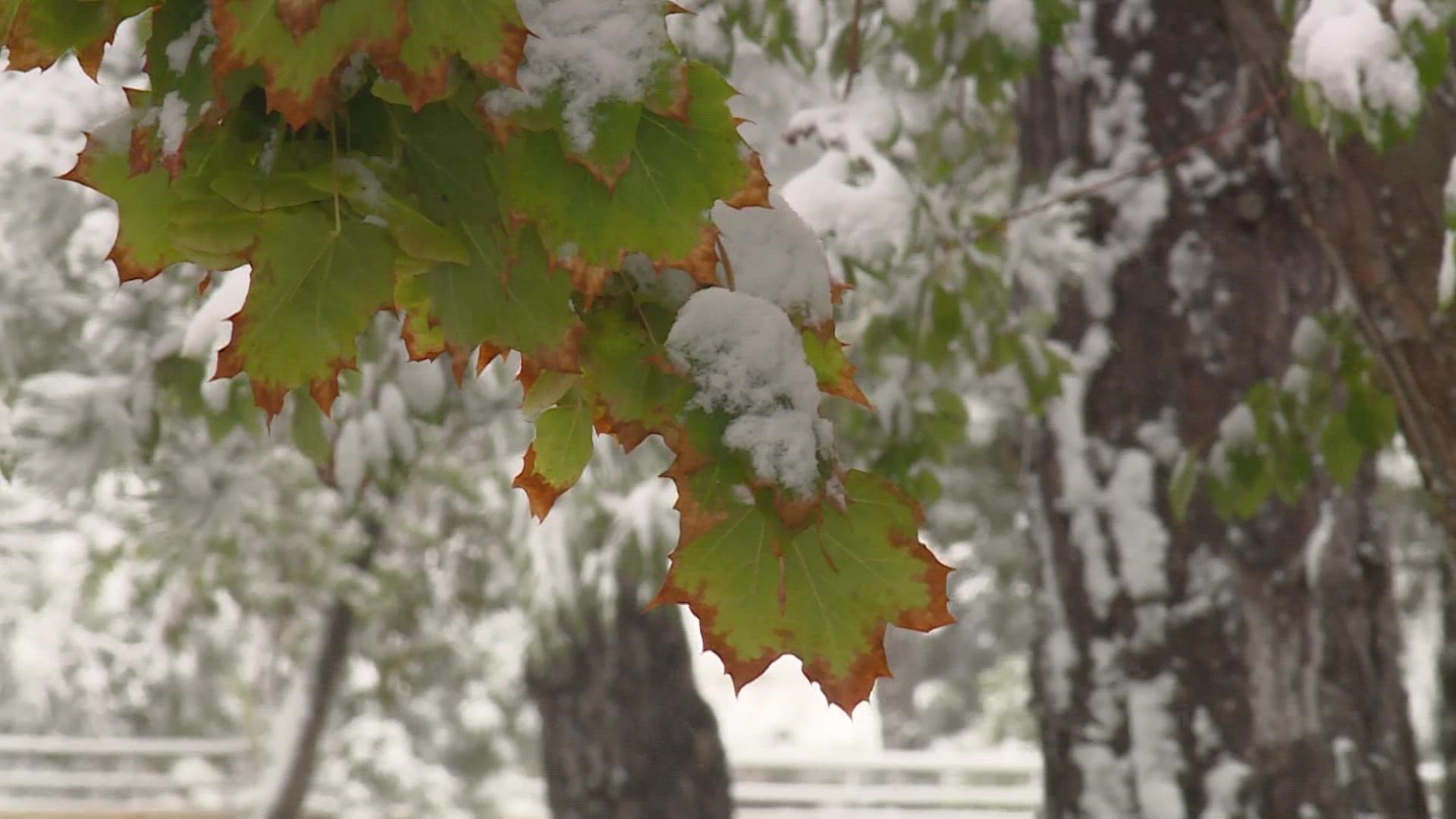DENVER — September is a very dynamic weather month on the Colorado Front Range. There can be severe weather, flooding rains, extreme heat and even snow.
That can make it difficult to get a feel for how the climate is really changing. That’s why climatologists use weather data in 30-year chunks to make comparisons and hone in on real change.
It's called the 30-year period of record, and it shifts forward 10 years, every 10 years. Last year was the most recent shift, which brought the new 30-year period of record from 1981-2010 to 1991-2020.
That record shows that in Denver, September is changing the most out of all the months, warming by 1.5 degrees compared to the previous 30-year period of record.

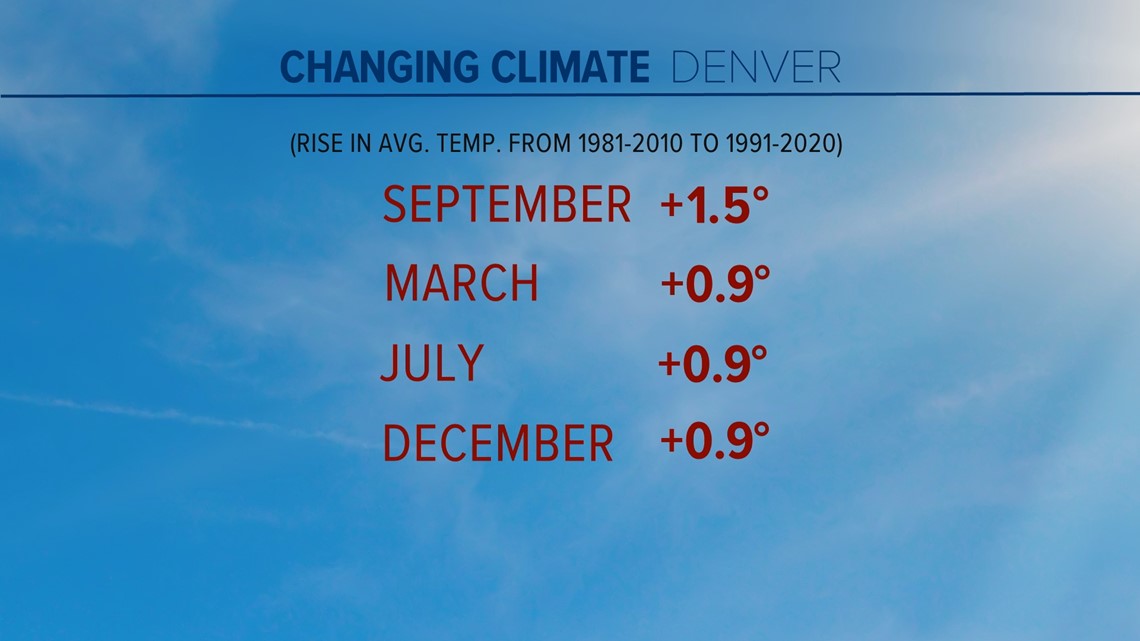
This week’s extreme heat fits this trend. The record number of 90-degree days in Denver for September is nine. There will be seven by the end of the day on Thursday.
RELATED: Record heat this week; cooler Friday
The forecast calls for three all-time heat records to get broken, and there’s even an outside shot at the latest 100-degree temperature in Denver history.
However, the big heat numbers that get put up this week will not count into the period of record until 2031, when the 30-year period of record shifts to 2001-2030.

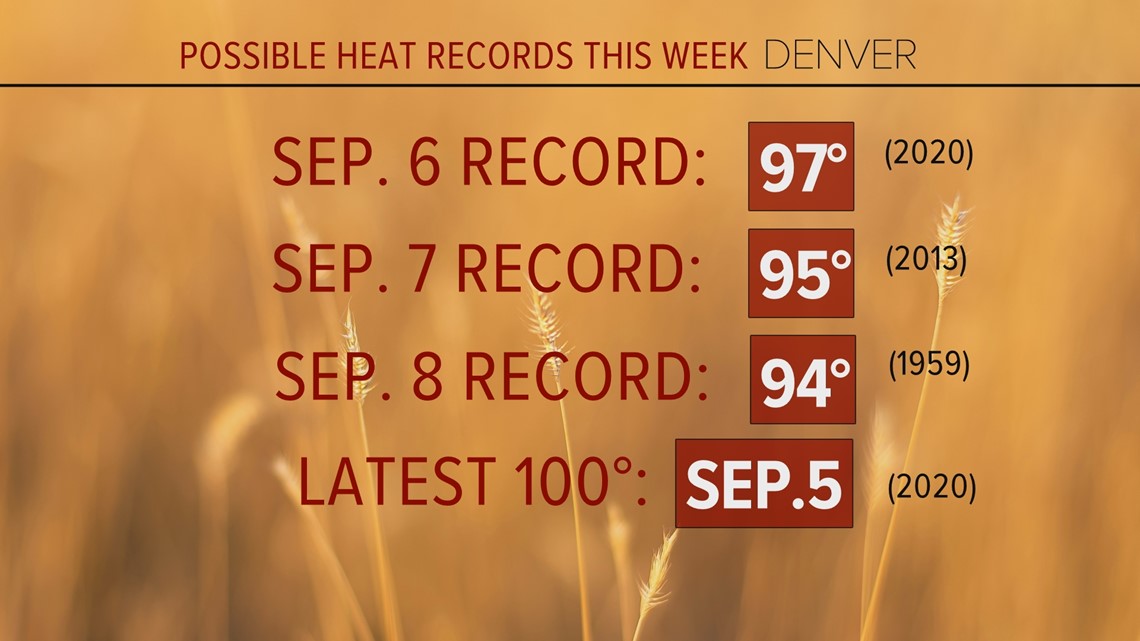
A comparison
Other metro area weather stations with a long climate record also show September as the month with the most change.
Stapleton/Central Park has September with a 1-degree increase. December is the second most, warming by 0.8 degrees. May, July and November all warmed by 0.6 degrees.
The Boulder station shows September on top, also with 1 degree of warming. May, July and December each had 0.7 degrees of warming.
September in Evergreen has warmed the most, up 0.9 degrees over the most recent period of record, followed by May and December, which have warmed by 0.8 degrees.
The UNC Greeley campus shows September on top, warming by 1.8 degrees. That's followed by May at 1.5 degrees of warming, and December, warming by 1.4 degrees.
The CSU Fort Collins weather station has September in a tie for the most warming, at 1.2 degrees, with the month of May. December shows 1.1 degrees of warming.
The Wheat Ridge station showed July on top, warming by 0.9 degrees, and September second, warming by 0.8 degrees.
Snow
It might be more noticeable to sense the change in September using snow, which used to be far more common in Denver, as the metric.
From 1962 to 1981, there was measurable snow five times. Over the next 20 years, it snowed nine times. Over the past 20 years, it’s only snowed once.

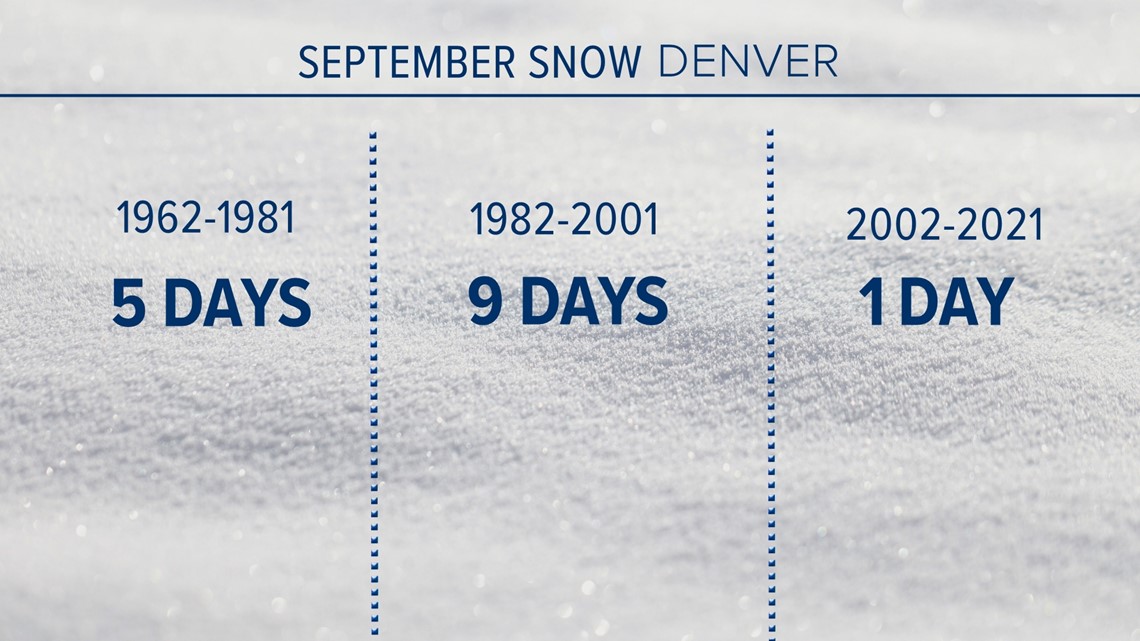
September may be the most obvious indicator of human-caused climate change on the Front Range. Even some of the earliest computer simulations of a future climate with elevated CO2 levels showed that the summer growing season will get extended – resulting in a shortening of the other three seasons.

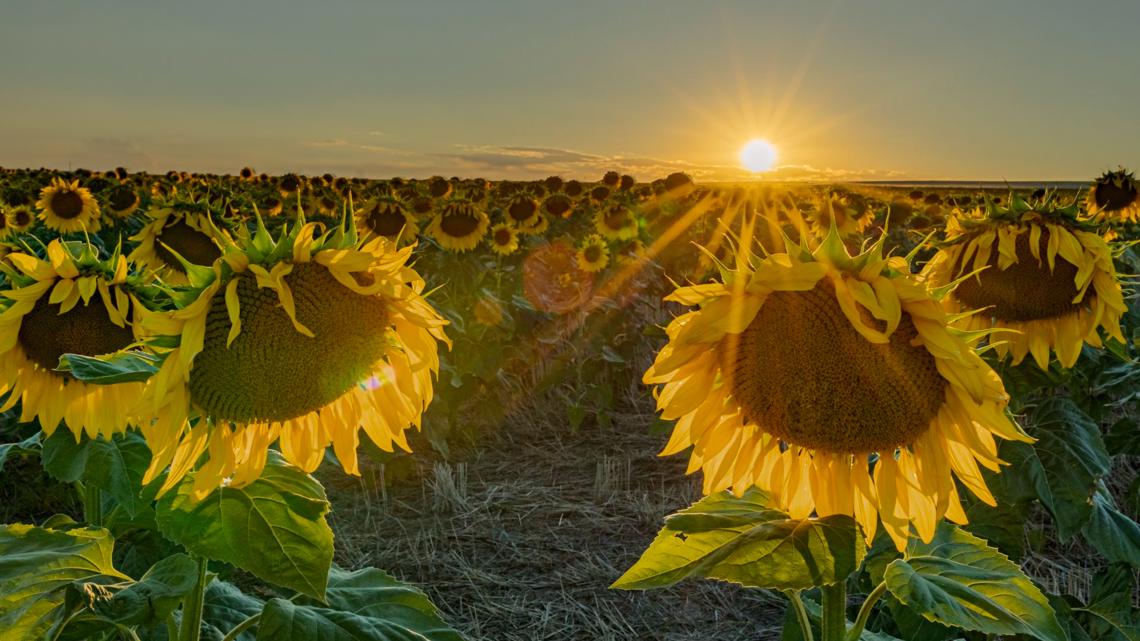
SUGGESTED VIDEOS: Colorado Climate

